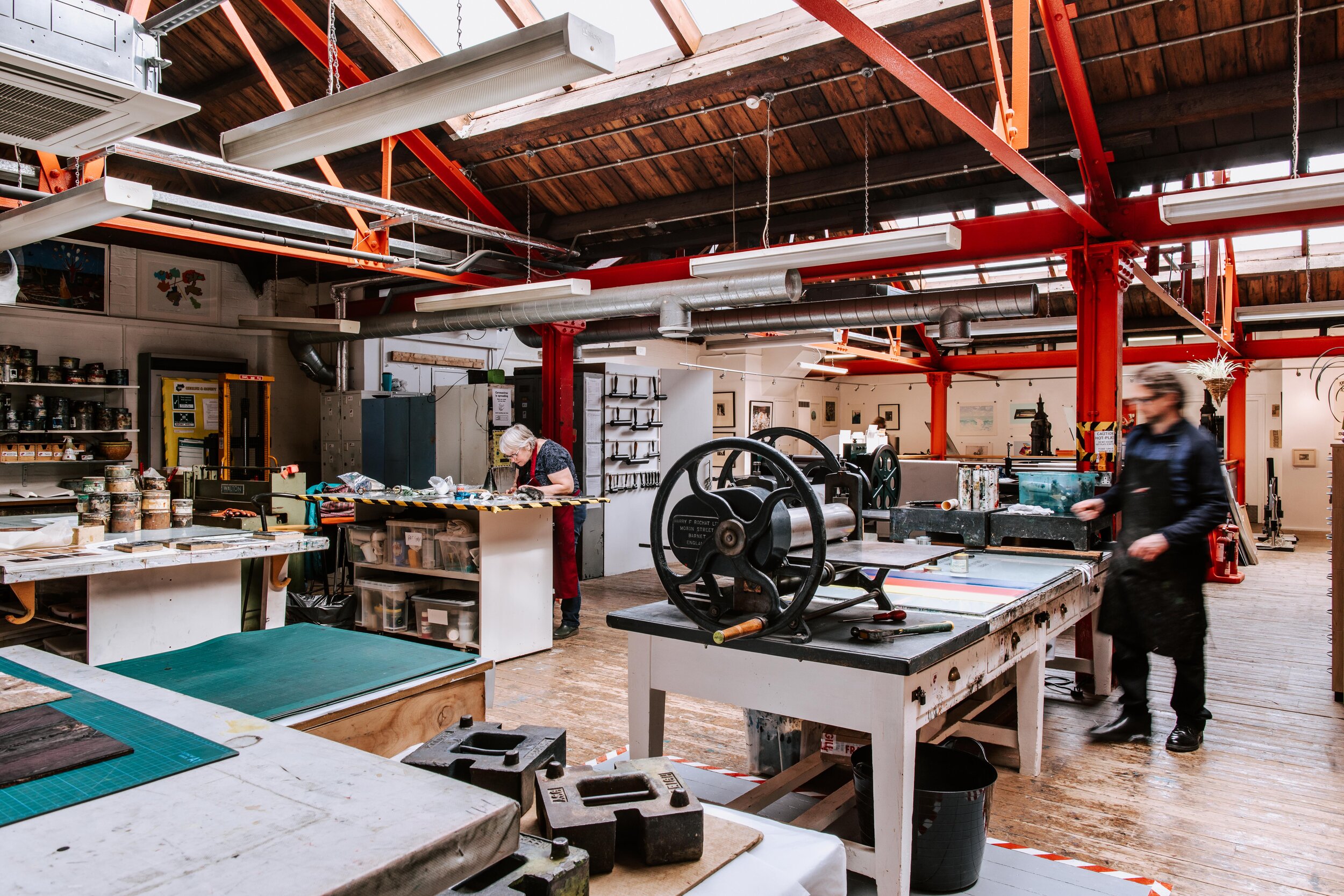The Rich History of Cotton Court
Let's take a journey back in time to unravel the intriguing story of Cotton Court, a large four-storey gabled warehouse nestled in Belfast's vibrant Cathedral Quarter. The warehouse, believed to have been constructed before 1830, stands tall amidst a tapestry of 1920s warehouses that are now integrated with it.
Located on the north side of Waring Street, this historic building has undergone significant changes over the years. While the original warehouse is mostly hidden today, small sections of its north elevation, east gable, and a glimpse of the west gable remain visible. These exposed sections feature rendered walls, with the east gable showcasing its original brickwork. The slated gabled roof adds a touch of traditional charm.
Adjacent to the original warehouse, you'll find slightly shorter brick-built warehouses from the 1920s. These structures, once hidden from public view, have large segmental arch-headed windows, now sadly blocked. Remnants of the neighbouring buildings that once abutted the warehouses can still be discerned, adding a sense of nostalgia to the setting.
To fully grasp the context, let's delve into the layout. The original warehouse was accessed through a lane on the north side of Waring Street, known as Cotton Court. This lane, once an open space, continued northeastwards to Gordon Street, passing a sizable open yard along the way. The entrance to the lane is now concealed by a plain single-storey building with a flat roof, featuring a large vehicle entrance and a square window facing the street. The western side of this structure, now exposed due to the demolition of an attached building, displays a mix of brick and render.
Moving towards the south, you'll encounter a range of four-storey warehouses from the 1920s. These brick structures boast hipped slated roofs and, once upon a time, featured large segmental-headed windows. While these windows are now blocked, remnants of the previously attached buildings are still visible. Look out for a tall narrow outline, possibly belonging to the return of the now-demolished structures, and a significant gable outline on the immediate right.
The western elevation, facing Hill Street, consists of a plain rendered three-to-four-storey hipped section on the left, an unadorned rendered four-storey gabled projection to its right, and a hipped roof section on the far right. The hipped roof section and the gabled projection likely predate the hipped roof range to the south, potentially representing buildings that once faced Hill Street. The truncated gable, which appears to have stretched further to the west before being cut, adds a touch of architectural intrigue. The section to the right of the gable, forming the western face of the hipped roof range, features blocked-up windows like the southern elevation but stands out with its glazed white brick, hinting at its history as part of a light well.
To catch a glimpse of the original warehouse's northern elevation, explore the yards belonging to properties along Gordon Street. While most of the ground floor and parts of the first floor are obscured by mid-20th century buildings, the second and third floors are still visible. The north elevation showcases plain rendered walls with relatively small flat arch windows on each floor. Although most of these windows have been blocked, the sash frames with vertical glazing bars remain intact, offering a glimpse into the past.
The exposed eastern gable of the original warehouse reveals its age and character. The lower half proudly displays its unrendered brick construction, characterized by small brown bricks that stand as a testament to its considerable age. The upper half features plain render, similar to the north elevation, with a blocked window on the third floor and a small window to the loft level. The gable seamlessly merges with the eastern elevation of the hipped roof range, which is brick-built without openings. The slated gabled roof of the original warehouse, adorned with a small skylight on the southern side, completes the architectural ensemble.
While the architects of Cotton Court remain unknown, the site's historical significance dates back to the late 18th century. Waring Street, where the warehouse is located, emerged as Belfast's financial and commercial center in the 1700s. The area experienced significant development and redevelopment from the late 18th century onwards, with the presence of buildings behind those facing Waring Street. Cotton Court itself started gaining mention in records around 1807 when it housed a small cotton mill, giving it its name. Over the years, the court evolved and accommodated various functions, including a Methodist congregation in 1830. Valuation records from 1837 indicate the presence of the current warehouse building, which may have been constructed around 1800 or earlier. The Ash family, associated with Waring Street, owned the property for several decades, with the building serving as a shop, stores, and offices during their tenure. Later, the warehouse changed hands, serving as a bonded warehouse, until it came under the ownership of Edward Dillon Ltd. in 1991.
Today, the transformed Cotton Court stands as a testament to Belfast's rich history and architectural legacy. It represents the resilience of the Cathedral Quarter and the continuous efforts to breathe new life into historic spaces. The fusion of old and new creates a captivating atmosphere where past and present converge.
Next time you find yourself in Belfast's Cathedral Quarter, take a moment to appreciate the hidden gem that is Cotton Court. Let its intriguing history and architectural splendor transport you to a bygone era, sparking your imagination and deepening your connection to this vibrant city.
- Belfast
- Events
- Classes
- Workshops
- BPW Members
- LNABelfast
- Exhibition
- LNA
- Linen Biennale
- News
- VaultChristmasMarket
- Market
- Christmas
- Talks & Demos
- Group Exhibition
- Vault
- Féile
- Linocut
- Linen
- Flax
- Tour
- Art and Print Workshops
- History
- Paper Making
- Regine Neumann
- Etching
- Cyanotype
- Live Music
- County Down Museum
- Coláiste Feirste
- Community Engagement
- Luxembourg
- René Mullin
- European Heritage Open Days 2023
- Schengen Luxembourg Project
- Cultúrlann
- Ulster Museum
- Architecture
- Niamh Ferguson
- Belfast Print Workshop
- Creative Expression
- Lino
- We're Hiring
- Job Opportunities
- Royal Ulster Academy
- Cultural Heritage
- Visual Arts
- Gerard Muldoon
- Art Therapy
- Josephine McCormick
- Irish Language and Culture
- Community Support
- RUA
- West Belfast
- Community Arts
- Eamonn McCrory
- Cultúrlann McAdam Ó Fiaich
- Preview
- FlaxPaperLab
- Launch
- Collagraph
- Mental Wellbeing
- Centic
- Cotton Court
- Mythology










